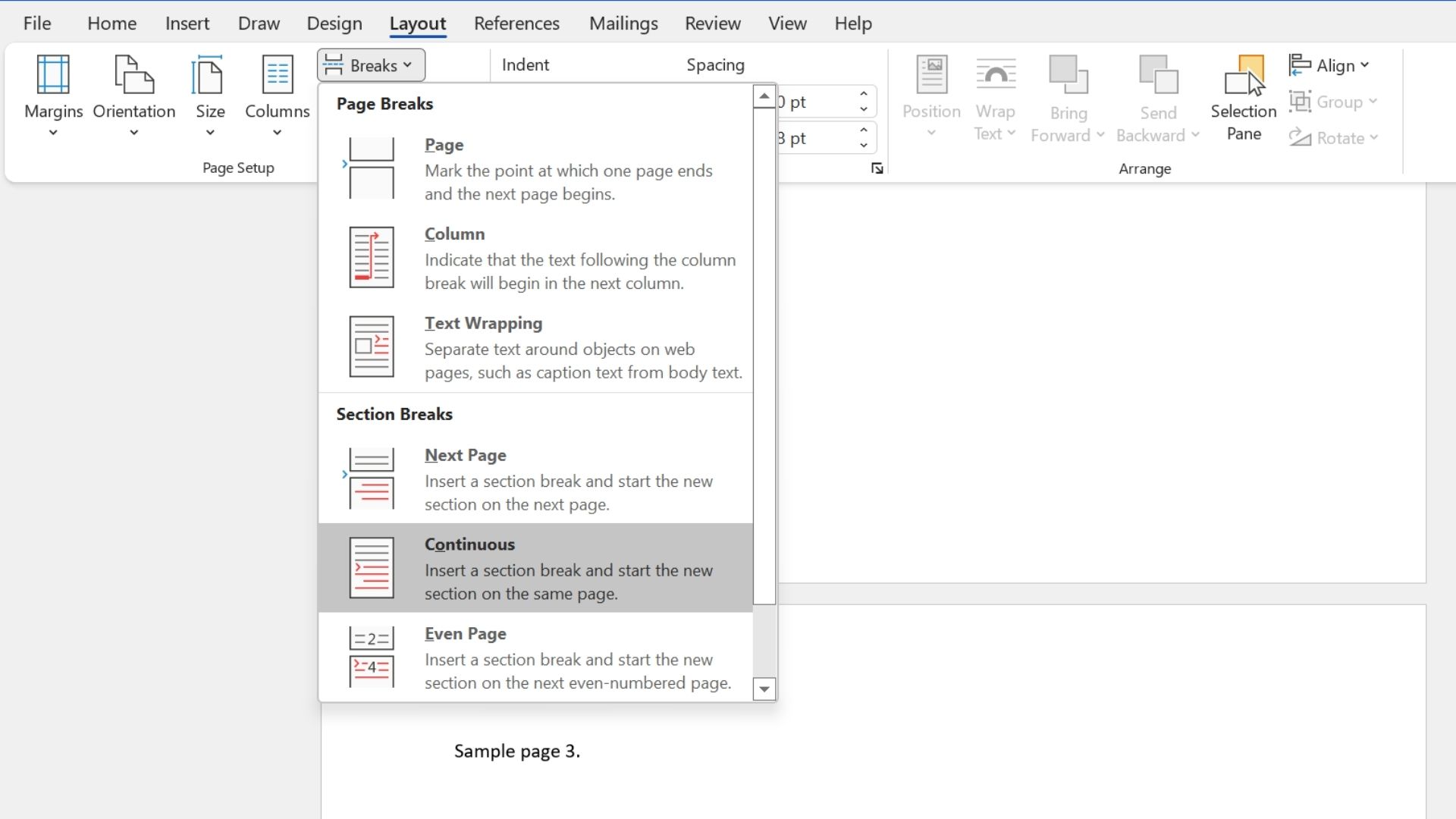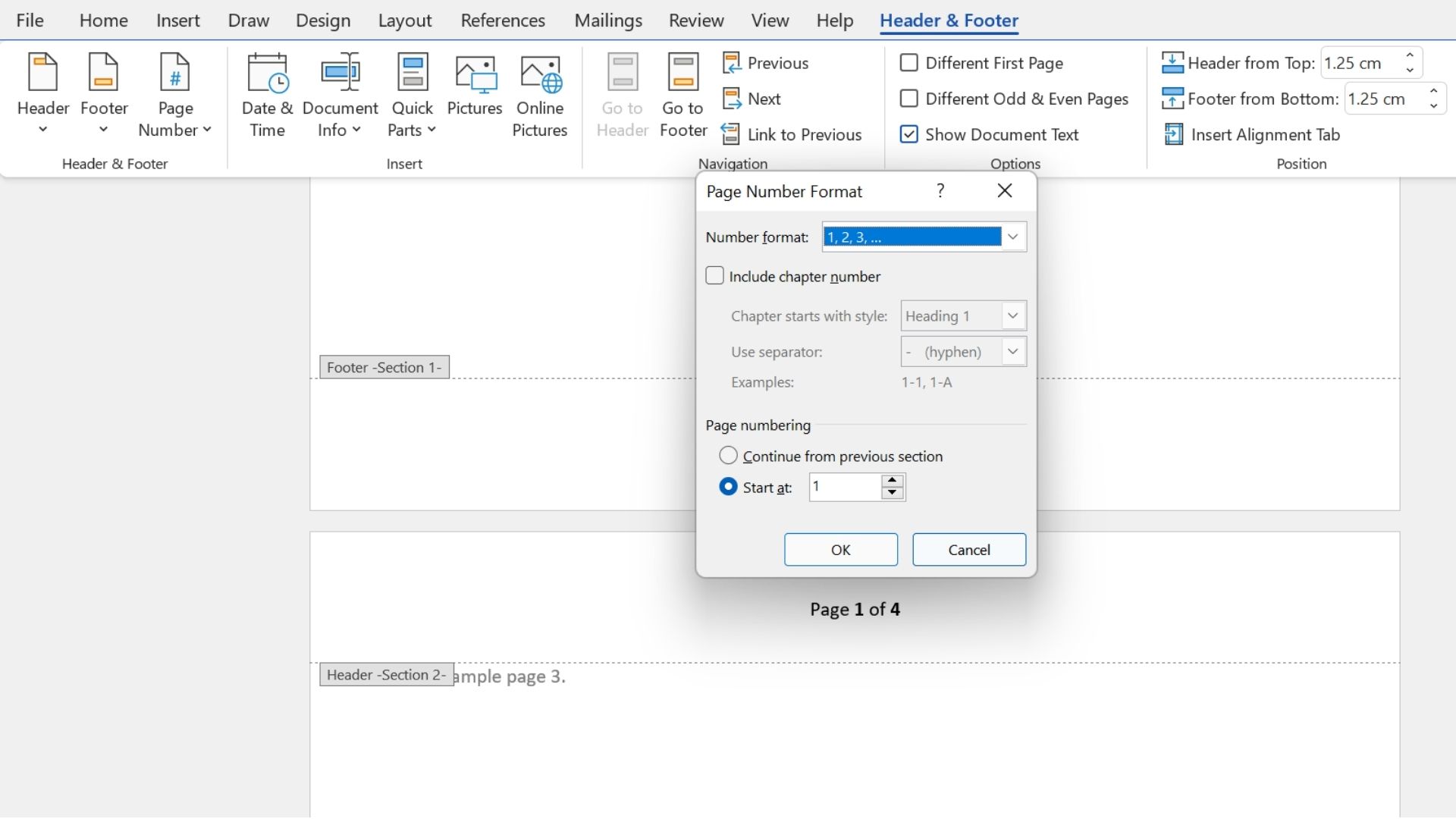How to start page numbering from a specific page in Microsoft Word
Learn how to start page numbering from a specific page in Microsoft Word and give your documents a professional edge


Customizing page numbering in Microsoft Word enhances document organization and professionalism, especially in formal contexts like reports with cover pages or tables of contents. Starting page numbers on a specific page ensures alignment with standard formatting expectations for academic or professional submissions.
By default, Word numbers all pages sequentially from the first page, which may not suit documents requiring unnumbered sections, such as title pages or introductions. Adjusting the starting point of page numbering improves readability and user experience by aligning the numbering with the document's logical structure.
Below, we provide a detailed guide on implementing this feature, including preparatory steps to help you set up section breaks and customize page numbers in Microsoft Word.
How to start page numbering from a specific page in Microsoft Word
Step 1: Prepare your document

To begin numbering from a specific page in Microsoft Word, you first need to divide your document into sections. Section breaks allow you to control where numbering starts, ensuring that introductory pages, such as title pages or tables of contents, remain unnumbered.
Start by navigating to the page where you want numbering to begin. Click on the Layout tab in the ribbon at the top of the screen. This will display various formatting options.
Next, click the Breaks dropdown menu to choose a section break type. For most cases, selecting Next Page is the best option, as it creates a distinct section that starts on a new page. However, if you need a continuous flow of text, the Continuous break option keeps content on the same page while creating a separate section.
Once the section break is inserted, your document will be divided into two parts:
- The first section, which will remain unnumbered.
- The second section, where page numbering will begin.
This step is crucial, as it separates the numbered portion of your document from the pages you wish to exclude.
Step 2: Insert page numbers
The next step is to insert page numbers into your document. Head to the Insert tab in the top ribbon, then find the Header & Footer section. From there, click on the Page Number dropdown menu.
You’ll have several options for where to place your page numbers — at the top of the page, the bottom, or within the margins.
After selecting your preferred position, you can also choose a style, including alignment, bold text, brackets, or other formatting options. At this stage, page numbers will be applied across the entire document, but you’ll customise which sections they appear in during the next steps.
Step 3: Deselect the Link to Previous option

The next step is to unlink the page numbering between the sections you created.
Double-click into the header, footer, or margin on any page within the section where you want numbering to start, depending on where you placed your page numbers. This will open the Header & Footer tab in the ribbon, giving you additional options.
In the Navigation section of this tab, you’ll see an option called Link to Previous. By default, this is usually enabled, meaning your new section is linked to the one before it, sharing the same header, footer, and page numbering.
Click Link to Previous to turn this off, breaking the connection between the sections. This ensures that page numbering in your new section is independent, allowing you to set a new starting number without affecting the earlier pages.
Step 4: Choose a number to start page numbering

Now that you've separated the numbering between sections, you can set the page numbering to start from your chosen page.
By default, Word assigns numbers based on the document’s overall page count, but if you're working on a formal document, such as an academic paper or a report, you may want the numbering to begin at 1 on a later page instead of following the total page sequence.
To adjust this, place your cursor anywhere in the section where you want numbering to begin. Go to the Insert tab and open the Header & Footer section, or double-click the header, footer, or margin where the page number appears to activate the Header & Footer ribbon.
Click on the Page Number dropdown menu and select Format Page Numbers. In the Format Page Numbers dialog box, locate the Start at field at the bottom. Enter the number you want to begin with, such as 1, then click OK to apply your changes. Your numbering will now start from the specified page while keeping the earlier pages unnumbered.
Step 5: Remove page numbering from the first section
The final step is to remove page numbers from sections that shouldn’t be numbered, such as a cover page or table of contents.
Click anywhere on a page in the section that should remain unnumbered, typically the first few pages of the document. Open the Header & Footer tab and locate the Page Number dropdown menu. Select Remove Page Numbers to delete them from this section.
Since the sections were unlinked earlier, this change will only affect the first section, leaving it number-free while keeping the rest of the document numbered from your chosen starting page.
Step 6 (optional): Change the page number format
If you need to use a different page number format, such as Roman numerals for introductory sections or letters for appendices, you can easily adjust this in Microsoft Word.
To change the format, navigate to the Insert tab and open the Header & Footer section. Click on the Page Number dropdown menu and select Format Page Numbers. In the Format Page Numbers dialog box, you’ll find a Number format dropdown at the top. This allows you to choose from several options, including Roman numerals (I, II, III) or letters (A, B, C).
If you’re working on a formal document, such as a dissertation or a report, you might want to apply Roman numerals for the front matter (e.g., i, ii, iii for the introduction and table of contents) and switch to standard Arabic numbers (1, 2, 3) for the main content. You can achieve this by inserting section breaks, unlinking sections, and setting the format separately for each section.
Once you've selected the desired format, click OK to apply the changes. The updated numbering will now reflect the chosen style.
Customizing your page number appearance
Once you've set up page numbering, you can further refine its appearance to match the overall style and formatting of your document. Microsoft Word provides various customization options to help create a polished, professional look. Whether you need to adjust the font, size, alignment, or apply formatting effects, these tweaks can enhance readability and ensure consistency with the rest of your content.
Changing font and size
To modify the font or size of your page numbers, double-click on the header, footer, or margin where they appear.
This will activate the Header & Footer Tools. Highlight the page number, then go to the Home tab, where you can choose a different font, resize the text, or apply formatting options such as bold, italics, or underlining to match the rest of your document.
Applying text effects
For additional styling, Word allows you to apply effects like shadows, outlines, or reflections to your page numbers.
Get the ITPro daily newsletter
Sign up today and you will receive a free copy of our Future Focus 2025 report - the leading guidance on AI, cybersecurity and other IT challenges as per 700+ senior executives
With the page number selected, open the Format tab under Drawing Tools (which appears when a text box is selected). Click on Text Effects to explore different visual enhancements, which can add a professional touch to reports, creative projects, or business documents.
Adjusting alignment
To change the placement of your page numbers, such as centering them at the bottom of the page or aligning them to the right, select the page number and navigate to the Paragraph section in the Home tab.
From there, choose the appropriate alignment option to ensure consistency across your document and improve readability.
By taking the time to customize the appearance of your page numbers, you can enhance the overall visual appeal of your document, ensuring it meets both your aesthetic preferences and professional standards.
Starting page numbering from a specific page can greatly enhance the readability of your document, especially when dealing with academic or professional papers. This approach ensures that only relevant sections are numbered, improving clarity and organization.
Although it typically takes just a few minutes, adjusting section and page number settings can become complex. Therefore, we recommend dividing your document into sections before you start. This preparation simplifies the process and prevents potential issues.
Once the sections are created, you can easily set the starting point and format for page numbering in the desired section. This approach allows you to manage your document more efficiently by ensuring that unnecessary numbering is omitted from the initial section.
You can further advance your Microsoft Office knowledge by reading our guides on:
- How to use the Microsoft Office Ribbon
- How to insert a tick or a cross symbol in Microsoft Word and Excel
- How to insert and edit footnotes in Microsoft Word
Rene Millman is a freelance writer and broadcaster who covers cybersecurity, AI, IoT, and the cloud. He also works as a contributing analyst at GigaOm and has previously worked as an analyst for Gartner covering the infrastructure market. He has made numerous television appearances to give his views and expertise on technology trends and companies that affect and shape our lives. You can follow Rene Millman on Twitter.